|
Studies continue to show the positive effects that music education has on children’s lives. Whether a school program is designed to familiarize students with music in general or to train them on a specific instrument, the impact extends far beyond developing a good ear and a knowledge of scales, and can potentially lead to improvements in areas like language development, spatial-temporal skills, and test scores. Today, music education classes are more engaging and comprehensive than ever, as modern technology has given teachers new tools to help students develop in their abilities as musicians. Listed below are five ways that technology positively influences the music classroom today. 1. Technology reduces problems associated with paper music. Traditionally, young music students who train on an instrument are responsible for keeping track of paper music sheets that they annotate during lessons and then bring along to every class. Many teachers admit to struggling with students who routinely lose their sheet music or have a habit of leaving it at home, but technology has the ability to solve this problem. Instead of using paper sheet music, teachers today can rely on digital tablets that keep all scores in one place and easily save any notes made in class. Tablets are also a helpful option for students during practice—they don’t have to struggle to keep paper sheets upright on a music stand, don’t find themselves missing pages mid-performance, and don’t have to think about turning pages as they play. Some tablet-friendly apps even allow a teacher to turn pages for all of his or her students at once from the teacher’s own device. Technologies like tablets and computers have also made music homework easier for students to store and organize. Web-based or other digital lessons and homework can be completed from anywhere, at any time, allowing forgetful students to avoid misplacing their assignments and earning lower grades. 2. Technology makes lessons clearer.Modern technologies like interactive whiteboards (IWB) are making it easier than ever for teachers to help students visualize and understand music concepts in class. When paired with notation programs like Noteflight, Sibelius, or Finale, the IWB can be useful for group lessons on music reading and writing, as the board can display and perform short scores as programmed by the instructor. IWBs also make it easy for teachers to record themselves demonstrating how to draw different notes and music symbols on the board for playback using a screen capture tool. This allows an instructor to step away from the board and give students a clearer view of what is being taught. Likewise, the ability to annotate scores projected from the IWB in real time allows a teacher to highlight different notes or measures of a song for children, making it easier for students to follow along with the lesson. Certain IWB software can also enable a teacher to mute specific notes or sections within a score to give students the opportunity to play along at designated points. Overall, research indicates that these kinds of technologies create a higher degree of flexibility in class and free up more time for teachers to answer questions and expand on topics during a lesson. 3. Technology makes music more accessible.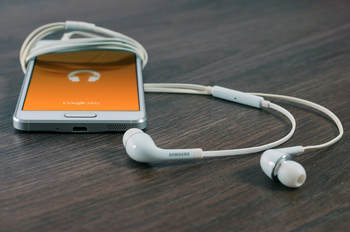 One of the best benefits that technology has given to students is to make music more convenient and readily available. From iPad apps that allow children to create digital tunes on the go to the immeasurable catalog of music available for free on the Internet, modern technology has established a world in which people can explore music from anywhere. In the classroom, this means that teachers can quickly and affordably use the Internet to show students the work of a wide range of musicians throughout history. Students can listen to and be inspired by the work of composers who lived hundreds of years ago, or discover music genres from countries they have never visited. Of course, the Internet is also an excellent resource for finding educational videos and games that help drive home lesson plans without the need for budget increases, which many schools cannot afford. Additionally, the Internet gives students access to websites and tablet apps that enable them to experiment with music composition long before they’ve developed the ability to play a traditional instrument. Some of the best apps that help children learn about composition prior to mastering an instrument include Sound Drop, SoundPrism, inHarmony, Dropophone, and Pattern Music. 4. Technology enhances communication between teachers and parents.Though not directly related to the lessons that take place in a music classroom, one important thing that technology has done for students is establish stronger lines of communication between teachers and parents. Research shows a connection between positive parent-teacher communication and student performance, and modern technology has made it easier for the two parties to communicate through email, classroom web pages or portals, webchat, video conferences, and social networking tools.
Children with parents who are involved in their education typically have better class attendance and behavior at school, and may be more able to see their music homework in a positive light. In addition, parents who have good communication with teachers are more likely to be familiar with the topics that their child is learning in class and can reinforce these lessons at home to bolster the child’s understanding of the material. People may choose to take music lessons later in life for a variety of reasons. Some seek to play an instrument for the many health benefits that studies show music can provide for older adults. Others may learn to play because the hobby has been on a lifelong “bucket list” of things that they want to accomplish. Still another reason that an adult may decide to become a musician later in life is the desire to join a band - an experience that can provide a fun opportunity to engage in a hobby while socializing with likeminded individuals. Adults who want to learn how to make music with the goal of becoming a member of a musical group should consider taking lessons in any of the following instruments commonly used by people in bands. 1. Vocals While some forget to think of the voice as an instrument, vocals are a key element in a majority of music. The lead vocalist is often the focal point of a band, holding the responsibility of interpreting and delivering a song’s lyrics to the audience. A lead vocalist sings the lead line or melody part of a song, and in some cases, is supported by backing vocalists, who complement the lead with harmony parts. Those who want to provide vocals in a band should enroll in singing lessons. These allow a beginning musician to strengthen his or her vocal muscles and learn to sing in a way that is best suited to the tone, range, and natural style of that person’s voice. Some people who choose to provide vocals in a band supplement their contribution to the music by learning another instrument that they can play while singing, or learn how to write the songs that the band plays. 2. KeyboardThe keyboard is an excellent instrument for an adult beginner who is drawn to the sound and graceful nature of the piano, but wants to take his or her talents to the stage. While some bands may choose to incorporate a traditional piano, the keyboard is not only transported more easily between gigs, but also offers a more versatile set of sounds for a musician to work with. On a keyboard, a musician can produce everything from melodic, classical grand piano sounds to synthesizers and warm, electric tones. The keyboardist in a band typically plays supportive parts that deftly complement the work of the other musicians and set the tone of the song in the background. To learn to play keyboards in a band, an individual can choose to take traditional piano lessons or may opt for lessons specific to keyboards. Though lessons vary stylistically by teacher, keyboard lessons tend to focus on teaching a student to play melody notes with the right hand while forming block chords with the left. Conversely, piano lessons tend to give students a greater range of ability by training them to play melody and block chords with both hands. 3. Bass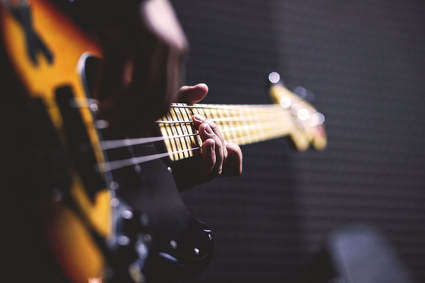 The bass may be the most underappreciated instrument in music. According to an article published on Guitar World Magazine’s website, a recent study found that the bassist may be the most important player in a band. Studies on test subjects’ abilities to detect discrepancies in low and high frequency tones in music indicated that listeners are more likely to notice flaws in the bassline compared to those in the scales played by the lead guitarist. This requires bass players to be extremely competent at providing rhythmic and harmonic foundation to a song. The standard bass has a body similar to that of a guitar, but is equipped with four much thicker strings that emit low tones. Adult beginners who take bass lessons will learn to play single, root notes that provide the integral support other musicians need to create balanced, well-rounded music. 4. DrumsLike the bass, the drums do not receive the level of recognition that they deserve, but have an indispensable role in the creation of quality music. The drummer is commonly known as the “backbone” of the band, and his or her ability to perfectly time a song by playing a steady beat is what enables other musicians to play together cohesively. Some beginners will select drums as their instrument of choice because they have natural rhythm and coordination that lends itself to developing a true talent on the instrument. However, many professional instructors within the music industry assert that almost anyone can learn to play the drums well with proper lessons and a dedication to regular practice. 5. Electric guitar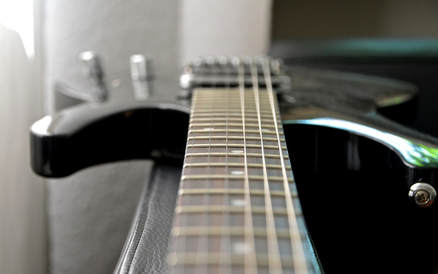 The electric guitar is the instrument that springs to mind first for many people when they think of the instruments in a band. Since it was first invented in the early decades of the 20th century, the electric guitar has changed the course of music, transforming the pop genre specifically through the work of legends like Jimi Hendrix, Eric Clapton, and Chuck Berry. It is an iconic instrument that is one of the most popular among music students in the United States. Bands often have two electric guitarists - one who plays the rhythm part of a song, and one who plays the lead, or a pair of guitarists who share both roles. The rhythm guitarist is the one who fills out a tune by playing full chords that are on beat with the rest of the musicians. This provides a strong layer of music for the lead guitarist to play over. Accomplished lead guitarists have a significant influence over the music’s overall style, and must develop strong technical and improvisational skills that allow them to blend guitar solos neatly into the tune created by the rest of the band. The question of why music was first invented has yet to be answered, but its effect on the development of human culture cannot be denied. Music helps us communicate, provides an opportunity for creative expression, and has the ability to bring large groups of people together, regardless of their differences. Listed below are six inventions that changed music throughout history and shaped the art form that we know today. 1. The prehistoric flute First on the list are the prehistoric flutes discovered only five years ago in a cave located in southern Germany. These instruments, carved from mammoth ivory and bird bone, are estimated to be over 40,000 years old, making them the oldest instruments ever found. Open at both ends, the flutes feature finger holes that would have allowed an early human to produce musical notes. This instrument is important for its likely use as an early form of recreation and entertainment, or as a part of religious ceremonies, as well as the possibility that it helped advance the social bonds of early humans. Thousands of years later, yet still far in our past, humankind would develop primitive instruments such as rattles, scrapers, and bull-roarers before creating the more refined and complicated instruments we know today. 2. The octave scale and notation Though many ancient civilizations developed their own musical scales, the ancient Greek thinker Pythagoras was the first to develop a near-perfect, mathematically-based scale that consisted of tones and “hemitones”—what we know today as an octave scale. Though it isn’t clear who first added to this early musical theory to develop an initial form of musical notation, this achievement is also often credited to the Greeks. They would influence 6th century philosopher Boethius to develop the letter system of notation using the letters A through G that we are familiar with today. Together, these inventions enabled humans to record and distribute compositions, allowing original compositions and musicianship to spread farther than it ever had before. 3. The piano The invention of the piano was a vital development in the history of music, as it gave composers of the time the ability to work within a range of notes much more vast and complex than those provided by the harpsichord, the piano’s predecessor. This keyed instrument allowed musicians to play in accompaniment with other instruments or to perform solo pieces, and became a central part of entertainment both in the home and the public sphere in the Western world in the 18th and 19th centuries. Though it is not the primary form of entertainment that it once was, the piano and keyboard continue to be some of the most popular instruments for people to learn to play. 4. The metronome Though small in size, the metronome has a significant impact on a musician’s ability to play in time with a song. Musical performances require a musician to interpret notes, play with emotional focus, and keep time all at once. A metronome allows individual players as well as composers directing a group to stay on beat and thus deliver a measured, impactful performance. Early experiments with metronomes were first conducted in the late 17th century, but the tool was not employed by any of the iconic classical composers until Beethoven. The metronome is still used today by amateur musicians as well as in major recording studios to help music professionals create the perfect sound. 5. The microphoneHumans had been working toward voice amplification since the days of the ancient Greeks and Romans, but a workable version of the microphone did not appear until the late 19th century. Its effect on the history of music was significant because it allowed people to hear music not only louder, but with a greater degree of detail than ever before. Its central use in musical recording had a direct effect on the eventual ability of people to listen to music anytime, anywhere. Prior to the invention of the microphone, people needed to see music performed live in order to enjoy it. Additionally, the use of the microphone in concert venues allowed small groups of musicians to put on a show of a size and volume that before was only attainable by large orchestras on naturally amplified stages. In modern music, microphones allow musicians to create complex works of art full of nuance to deliver a more powerful performance to their listeners. 6. The electric guitarThe most recent invention to make this list is the electric guitar, which changed the direction that modern music took by providing players with an energetic, exciting new sound. The electric guitar was invented in 1931 and came accompanied by an external speaker that received the vibrational input from a pickup inside the guitar, turning the vibrations from the strings into the characteristic sound we all know today. Jazz and blues players of the mid-20th century first adopted the instrument, ushering in a new era for both genres.
In the 1950s, the fledgling rock and roll scene would adopt the electric models developed by Gibson and Fender to create a new genre of music that set the stage for popular music today. It became the trademark instrument for a long list of guitar legends, including Stevie Ray Vaughan, Jimmy Hendrix, Jimmy Page, and Eric Clapton. The electric guitar continues to be a favorite among youth in Western culture and remains central to the creation of popular music. Over the last two decades, music has begun to play a more prominent role in video games. Many video game aficionados believe that music is one of the most significant parts of the video game experience. Over time, video game music has risen to a level comparable to that of movie soundtracks in terms of its importance to the overall entertainment experience. Music appreciation and video game scores are not mutually exclusive, and many renowned orchestras have even gone so far as to recreate scores of popular video games in a live format. This was seen in the London Philharmonic Orchestra’s production of Rhapsody in Blue, which featured music from the classic Tetris video game. The Tokyo City Philharmonic Orchestra even performed orchestral video game music concerts that ran for five years and were led by one of the world's most renowned conductors, Koichi Sugiyama. Video Game Music and the Arts According to statistics, classical music in the United States has declined in popularity by nearly 30 percent since the year 2010. In fact, since many United States orchestras have faded in obscurity and suffered financial ruin as a result, interest in recreating the music of top video games has helped to foster a resurgence in public interest. By incorporating pop culture connected to video games, orchestras can stay afloat by appealing to younger audiences, and the impact of video games on the renewed popularity of classical music cannot be overstated. In addition to driving digital sales and highlighting the importance of musical scores, the music used in video games also provides opportunities to collaborate with renowned composers and other musicians in order to create some of the most amazing video game music ever produced. For example, the London Symphony Orchestra collaborated in the production of The Legend of Zelda Symphony of the Goddesses video game score, in addition to the forthcoming Pokémon: Symphonic Evolutions. A well-thought-out video game music score can engage gamers, and some have remarked that a compelling video game score will keep them interested in the game long after the novelty has worn off. A great musical score on a video game can take an average game and turn it into a superior game that undoubtedly earns new fans. Music in the Final Fantasy FranchiseOne of the most widely discussed video games in terms of musical scores is the Final Fantasy series. The Final Fantasy video games involve role playing and the best-selling video game series of all time. Alongside stunning visuals and interesting storylines, developers focused their attention on musical scores that are virtually unparalleled in the gaming industry. In many versions of Final Fantasy, music plays a central role in creating the overall gaming experience, and this has not gone unnoticed by music professionals. The music in in the Final Fantasy game series is intended to accompany the varied plots and mirrors the characters’ emotions. One of the most profound music scores in the Final Fantasy series was seen in Final Fantasy VII’s One Winged Angel, which earned critical acclaim not only for the game itself, but for the associated musical score, which has been described as modern-day. This attention to detail when creating video games could explain how these games have maintained longevity beginning in the ‘90s all the way to the present. The music in Final Fantasy has been come so popular that even classical musicians have begun to hold video game-themed concerts such as the Final Symphony and Nintendo Music Celebration, which hosted its first-ever video game music concert in Japan in 2003. The Final Fantasy video game series set the stage for a variety of other video games to follow suit. From Bioshock to Halo, video game music has generally become much more sophisticated. Aside from the fact that musicians perform video game scores more often now, once these video games are released, they often include chart-topping songs. Final Fantasy achieved this in 2016 when its soundtrack reached number 17 on the Classic FM Hall of Fame list. EarthBound Offers Notable Music Selections Another popular video game with notable music selections is EarthBound. While the game features a prominent Nintendo character, critics were more impressed with the musical score. The score on EarthBound has been described by some as a masterpiece, even though this game was made over 20 years ago, when video game music scores did not receive the respect that they have since then. Music is integrated in nearly every aspect of the game, which itself has been described as exhilarating, thought-provoking, and mysterious. EarthBound was a formidable game in the market, yet its music is what sets it apart from the others. Despite the critical acclaim that it gained for its musical score, EarthBound received very little publicity and it’s possible that critics at the time did not fully understand the brilliance of the musical score. Although video game music scores have not earned widespread respect, there has been a great deal of progress. One of the major benefits of including music in video games is that it can help to facilitate a connection between the gaming world and appreciation for various music genres. Music enthusiasts tend to be well-rounded individuals, and those who enjoy gaming will particularly understand that the experience can be augmented by a powerful musical score.  Although technology has played a role in the American education system for quite some time, music programs in particular have been slow to integrate it into the classroom. In addition to the usual resistance to funding the arts, this delay is often due in part to the physical layout of the typical music classroom, where crowded students typically have little-to-no desk space, thus making the use of electronic keyboards highly impractical. Despite these challenges, most music educators believe in the value of educational technology. In a 2013 PBS survey, teachers reported that technology increased their students’ desire to learn and reinforced and built upon previous classwork. Additionally, using modern technological tools in the music classroom can free up some of a teacher's limited instructional time by making routine tasks faster and easier. It can also improve communication between students and teachers, as well as between teachers and parents. The following are two ways that music teachers can add technology to their classrooms to augment the learning process: Mobile Devices for Sheet Music Of all the technological advances used in the classroom, the tablet is arguably the most popular. One of the best uses of the tablet in a musical classroom setting is as a replacement or substitute for paper sheets of music. Instead of dealing with multiple pages of sheet music, students can access all of their materials on this device with just a few taps. Using a tablet for this purpose eliminates the huge problem of students losing their music, thereby removing a major source of frustration for teachers. In addition, students can use tablets to compose songs, access apps, and view study materials and test scores. And best of all, the average tablet doesn’t take up much size and is easy to carry and store, unlike electronic keyboards. One app that music teachers heartily endorse is Piano Street, which gives kids access to over 3,000 classical piano study scores and more than 20,000 pages of sheet music. It also offers practice guides, an audio-video study tool, a music dictionary, and a forum, in which students can read about a wide variety of piano-related topics. Other popular technology options for the music classroom that work well with tablets include Garage Band, Ear trainer, and real piano pro. Digital WhiteboardsAnother great way to include technology in the music classroom is through a digital, or “interactive,” whiteboard. These interactive devices allow teachers to share information on a user-friendly screen that is much more sophisticated than an old fashioned chalk board or dry-erase board.
Interactive whiteboards combine touchscreen technology with a projector connected to a PC or laptop, so any information or documents stored on the computer can be easily displayed on the board for all the students to see. Students can share ideas and explore concepts by physically interacting with the objects on the screen, and teachers can even enhance the interactive whiteboard experience with special pens and erasers. Many instructors also use interactive whiteboards to play instructional videos. Teachers can use interactive whiteboards to introduce new vocabulary words, demonstrate rhythm and tone, instruct students in musical notation, and more. To really engage students, teachers can have their class use this technology to create and play their own original compositions. For inspiration, there are numerous online resources available, including lesson files and templates developed by other music teachers. Undeniably, technology has infiltrated nearly every part of our lives, and it is rapidly changing the way we learn. Music instructors must not only have the desire to bring technology into the classroom, they should also be willing to familiarize themselves with the latest technology and figure out how to best implement it. Children are comfortable using technology in other areas of their lives, and most will adapt very easily to technology in the music classroom. Therefore, teachers don’t need to worry about their students struggling to overcome a steep learning curve. Music teachers might have to explain to administrators how implementing technology in music classrooms can benefit the school as a whole. To ensure that all students in the class have access to technology, teachers, administrators, and parent groups can work together to find grants and donors, or hold fundraising events. When it comes to music appreciation, one can never have too many resources. From in-person classes to YouTube videos, there are a huge variety of options available. Another great resource for music appreciation is the podcast. Music appreciation podcasts are essentially recorded radio shows that can be accessed anywhere, anytime on laptops, desktop computers, and other Internet-capable devices. This ease of access allows individuals to learn about music appreciation on the go. Here, we explore some of the best music appreciation podcasts around. Music and the Brain Audio Podcast Provided courtesy of the Library of Congress, the Music and Brain Audio Podcast features notable composers, music theorists, performers, and a host of other music experts who share their knowledge of music theory. The Music and the Brain Audio Podcast also delves into topics that provide insight into the minds of musicians by speaking with cognitive psychologists and composers. This helps listeners understand how language and music are processed by the human brain. One of the Music and the Brain Audio Podcast episodes is entitled The World in Six Songs: How the Musical Brain Created Human Nature. In this particular episode, author Daniel Levitin enlightens listeners on music history and how it evolved from ancient languages. Another episode in the series is Depression and Creativity Symposium. This episode explores the connection between mental health conditions (such as bipolar disorder and depression) and their link to creativity. Yet another Music and the Brain Audio Podcast episode examines how music can possibly prevent - or encourage - criminal behavior. This podcast lecture, entitled Music, Criminal Behavior, and Crime Prevention, explores how music has been successfully used to curb criminal behavior. From the TopHosted by renowned concert pianist Christopher O'Riley, From the Top highlights classical musicians on its weekly podcast. From the Top was originally a radio variety show hosted by Gerald Slavet and Jennifer Hurley-Wales. It has since evolved into an educational and entertaining show with millions of fans across the globe. Popular topics on the From the Top podcast series are reports on prominent musicians, orchestras, and all things having to do with music appreciation. So far, From the Top has featured over 3,000 classical musicians and has broadcast more than 300 shows. Music Magic with Chick CoreaHosted by award-winning jazz legend Chick Corea, Music Magic with Chick Corea gives listeners an in-depth view of the process of creating music. Chick regularly interviews jazz legends as they detail the behind-the-scenes aspects of the creative process. On his podcast, Chick Corea chats with music industry pals such as John Mayer, Stanley Clarke, and many more prominent musicians. Each of the conversations on Music Magic with Chick Corea are recorded with artists while in their element - on the road, in between studio sessions - allowing users to get a feel for the real life of a working musician. Music Appreciation for the Rest of Us: Andrew Constantine Podcasts on Great Symphonic Masterworks For anyone who's ever struggled with learning about music theory or music appreciation, the Music Appreciation for the Rest of Us podcast may help. Music Appreciation for the Rest of Us regularly features topics such as reviews of classical music, in-depth analysis of 20th-century symphonies, and a variety of other topics closely tied to music appreciation. Music Appreciation for the Rest of Us is hosted by Andrew Constantine, who is the former music director of Reading Symphony Orchestra. Although the podcast is no longer in production, each episode is available through a variety of outlets, including Apple’s iTunes store. Meet the ComposerThough most people love music in some form, few take time to really ponder who actually created some of the world’s most beloved songs. Hosted by successful violist Nadia Sirota, the Peabody Award-winning Meet the Composer podcast highlights some of today's most well-known composers.
Each episode in the Meet the Composer series gives listeners an inside look at how composers develop their material, their thought processes during the time of creation, and other inside information that can't be found anywhere else. The goal of the Meet the Composer podcasts is to open a new world of music to listeners. Meet the Composer achieves this goal by helping listeners make the connection between the music they hear every day and the composers who make it possible. Those interested in checking out the Meet the Composer podcast can subscribe via iTunes. Updates are regularly posted on the show’s Facebook and Twitter pages. Listening to podcasts focused on music appreciation is not only entertainment. Podcasts also give listeners a totally different perspective on the history of music and how much effort it takes to complete a musical piece. For younger audiences, listening to music appreciation podcasts help bring composers of popular songs to the forefront, rather than placing all of the attention and accolades on performers. As a parent, trying to find ways to incorporate musical education into daily life can be challenging. Many parents fill their homes with music, hoping that their children will learn to love music almost by accident through their immersion in the sounds of the classics. While this may work to an extent, a thoughtful and careful approach to introducing your children to music may increase your odds of success. One aspect of musical education that is often overlooked but still essential is the study of composers - the people who write the music that we enjoy. With a few simple additions, parents can offer their children a well-rounded education in the study of music. This not only gives them an introduction to music, but to the masterminds behind it as well. If you are interested in adding a study of composers into your music related activities at home, here are five easy strategies: Check your local library and ask your child questions. First, determine which composer you want to introduce. Select a song by that person that you may have already listened to, or choose one of your favorite songs to start. You may want to find a book about that composer. The library is a great resource for this; there are often numerous books at different reading levels. Alternatively, have your child research their favorite modern song. Who is the composer? Who is the performer? What was the inspiration for the song? Have others performed the song? Talk about how composers allow others to perform their music, usually for a fee. Discuss how the advent of new technologies has changed the music industry and the possible ramifications for composers and musicians alike. Use online resources.When looking for creative activities for your child, there are numerous online resources. These include, but are not limited to: Homeschool Share An activity resource covering a variety of topics, Homeschool Share provides free resources of printable pages that you can use to study composers and their music. Making Music Fun Filled with dozens of resources, this website gives users the information they need to fill their homes and their kids with knowledge. Squidoo A user-generated resource, Squidoo allows users to upload files for sharing with others. Doing a search for music or composers will yield multiple results. Learn to play the music of the composer.Another valuable way to learn about a composer is to learn to play their music. If your child is musically inclined, find resources to help them learn to play the music of your chosen composer. Printable books for many composers are available online, or visit your local music store to find books on your child’s ability level. Listen to their music.  Fill your house with the sounds of your composer. Visit your local music store to find CDs of the composer you’re studying. Devices like MP3s as well as streaming services make it easier than ever to find music. Need a good place to start? Here are a few: Spotify USA Spotify is a subscription-based service that allows you to choose to listen to any music available. Pandora Subscription-based, Pandora enables users to create their own stations based on a selected theme. Create a station based on the composer you’re studying and have an instant playlist available. Meet the Musicians A DVD series, Meet the Musicians allows your child to see (and hear) information about your composer. Follow a complete program. The website 52Composers.com offers a weekly study of composers categorized by time period, country of residence, or in alphabetical order. This easy-to-use site enables people to learn about a different composer each week. Video and audio clips of composers’ most famous works are available, along with information about their lives. Complete with printable graphics and links for more information, this one-stop resource of material solves the dilemma of which composer to study. Simply log onto the 52composers website each week to find information and printable material. The Benefits of Structured Learning Finding ways to add music into your daily activities requires creativity and planning. By exposing your children to the rich world of music, you teach them about the individuals who create music. Additionally, you help them discover that there is more to music than what they hear on the radio.
Today’s composers are using new technologies and musical styles to create the sounds of mainstream music. Contemporary classical composers, on the other hand, balance new styles and techniques with an adherence to the past. Perhaps, thanks to your influence and inspiration, your child may aspire to become the next Beethoven or Mozart, composing songs that will change the course of music. Perhaps they will simply learn to appreciate the craft required to write music for others to play and enjoy - a lesson well worth your time and effort. For parents wishing to give their child a love of music, upping the ante by studying the people behind the music is a bonus, for you and your child. You’ve just learned that your child is not just a little talented—he or she is a musical prodigy. While this scenario is particularly overwhelming for parents who aren’t musically inclined, it can present a new set of complications that the vast majority of parents aren’t equipped to handle. How can you give your child the tools he or she needs to develop and refine his or her talent without becoming oppressive and domineering? Is it possible to raise a child prodigy without turning your child into mini-adult? What steps should you take to ensure your child gets the training he or she needs? To keep your child healthy and happy while challenging them to achieve their musical potential, do the following: 1. Promote creativity. Because primary music classes focus on learning to play music that was written by others, they are often filled with simplified versions of classical songs with easy-to-follow patterns and melodies. However, it’s never too early to encourage your child to be creative and develop his or her own sounds. While prodigy students rarely need encouragement to practice, they do, however, need encouragement to venture beyond the notes that are already written and create their own songs. These children’s early tunes may never make the radio playlists, but they are a vital step in learning to interpret musical sounds—a skill that will help them appreciate and understand music in a whole new way. 2. Encourage listening.Expand your child’s listening repertoire by playing a variety of musical genres and styles. Take him or her to operas, symphonies, and other musical performances as often as possible. Not every style of music will appeal to your child, but he or she should have the opportunity to hear the wide range of music available. Introduce your child to different styles of classical music, converse with him or her about your favorite rock band from your teenage years, or discuss the rise and fall of popular music styles. As your child begins to listen critically, he or she will start to develop his or her own sense of musical style. 3. Facilitate performances.Not every 5 year old is ready for a stage performance at the local performing arts center. However, you can help you child develop early performance skills by setting up a “special showing” for friends and family in your home. Find teachers who encourage students to participate in recitals, musicals, and other ways to publicly share their musical talents. Taking part in a musical competition, playing for the school choir, or pursuing other ways to perform can help enrich your child’s musical development and help him or her build confidence. 4. Establish a life balance. Even a child prodigy needs to go outside and play regularly. While the temptation may be to use every waking moment as an opportunity for more practice, you need to allow your child the opportunity to be a kid. This may be particularly difficult for a child who adamantly wants to pursue their musical passion. However, it is important to establish healthy boundaries for them while they are young, so they learn to enjoy other aspects of life as well. 5. Research musical education opportunities.While there are countless opportunities for child prodigies, not all of them will be a good fit for your child. Do your research to find the teacher, school, or facility that will best meet your child’s needs and dreams. In addition, take advantage of the various scholarship opportunities available for those who may need financial assistance. If your child is determined to hone his or her musical gift, finding the right school for them will require a significant effort on your part. This may involve an extensive application processes, followed by auditions and tryouts, but your efforts will be worth it when your child fulfills his or her dream. 6. Work with your child’s teacher.Choose your child’s teacher carefully. Don’t be afraid to shop around for a teacher who best suits your child—the most effective teachers want to work with students who are a good fit. Once you have established a relationship, work together with the teacher to establish a practice schedule and learning plan that will help your child develop. Discuss concerns about maintaining a healthy balance at the beginning, so there are no surprises later. Explore what opportunities for performance the teacher provides and ask about “trying out” the teacher for a few weeks to see how your child responds to his or her methods. If you partner with the teacher, your child will be more apt to succeed.
The most important thing a parent can do for a musically gifted child is to encourage him or her to follow his or her dream. You may not be raising the next Sergei Prokofiev, but you will be developing a child who is passionate about music and who will benefit from the influences of musical training for the rest of his or her life.  For centuries, music has been included as part of a well-rounded education. In order to be considered properly schooled, students should receive music lessons that include composition, performance, and music appreciation. At one time, it was the privilege of the elite to own instruments, and the most proficient musicians were often supported by patrons who sponsored their work. Much of what is known as classical music was developed under this system of sponsorship. As society changed, however, the availability of music in the form of lessons grew more widespread and ultimately became a part of the public school system. Music has evolved as technology has advanced, becoming a multibillion-dollar industry that impacts every facet of life. More than composition and instrumental lessons, the music industry includes editing, vocalization, and digital production. Since the invention of the phonograph in 1877, the music industry has diversified, giving people the ability to own and enjoy music from all genres. Classical Music OfferingsThe music industry is growing. Students spend up to five hours a day listening to music. However, music education has not kept pace. Despite the fact that classical music accounts for less than 2% of album sales, nearly every school-based music class is centered on learning classical music. While there is value in learning the traditions and origins of music, the focus on classical music may explain the lackluster enrollment of students in secondary music classes. The reality is that the music industry is not reflective of the material being taught in schools. When students engage with music in virtually every aspect of their lives, yet have no interest in taking music classes, there is a disconnect that schools must address. Frequently subject to budget cuts and schedule changes, music classes have been struggling for a place in the educational curriculum. Declining enrollment in music classes has forced schools to eliminate specialized music courses, leaving only the general, classical-based options. This cyclical pattern of reducing music to the barest of offerings, coupled with minimal interest from students, has created an environment in which music if often absent in schools. Production Mastery In just over a century, music has advanced from phonograph recordings available only to the most wealthy individuals to digital production and recording tools available on smartphones and in the hands of the average teenager. The changing face of the music industry can perhaps best be seen in the role of the music producer, who has evolved alongside technology. No longer simply involved in the “business” side of music, producers are often musicians in their own right and can shepherd musicians through the creative process involved in writing, performing, recording, and releasing songs. Producers today have predecessors such as Sir George Martin, the legendary producer of The Beatles, as well as Phil Ramone, who is notable for his work with Paul Simon, to name a few. As the face of music changes, music teachers in today’s classrooms would be well-served by following the example of these producers for inspiration. Much like Martin, music teachers can use their skill and experience to teach students composition, recording techniques, accompaniment, and other production-based lessons using readily available technology. By expanding their curriculum to include more than performance-based lessons, teachers are once again bringing music to a new level. Embracing the Cultural ArtsMusic has mass appeal, but in order to continue to provide students with relevant and engaging lessons, music teachers must find ways to embrace the cultural arts and bring them into the classroom. Classroom offerings that center on digital production, responsible downloading, sharing of files, mixing and recording music, and other modern applications of music are not only relevant to today’s music industry—they keep students engaged in learning. Trying to convince the public of the importance of music education is easier when the demand for music classes exceeds the number available. While music has always been part of adolescence (think mixtapes and garage bands), bringing it into mainstream education as a relevant part of today’s lifestyle adds greater credibility and value to its inclusion.
Finding new and innovative methods of introducing students to the arts is essential to music education. Opening the door for students to be exposed to the creation of music both in theory and practice has far-reaching benefits to society. Music has—and always will be—a part of our culture. Capitalizing on students’ natural attraction to music by offering them opportunities to study its impact and relevance within the culture is both timely and smart. There will always be a need for the fundamentals of music. The classics will remain an important and necessary part of music education. Adding new facets of music will not diminish long-standing traditions. Perhaps by embracing these new aspects, students will find that they are once again drawn to the origins of sound and develop a new appreciation for where music began. Learning can be more effective when it’s disguised as something fun. For example, you can introduce even the youngest child to complex themes such as music theory, composition and notation when you include them in a game. Active Music Games Music lends itself naturally to movement. Anytime you can combine learning with movement AND music, kids are more likely to enjoy the lesson, and they will retain more of what they’ve learned. Incorporating movement and fun into music lessons is an effective tool for engaging students who may have difficulty sitting through an entire class. Sound Story Reading—Select a story that has a lot of action. Assign different rhythm instruments to different actions. As you read the various actions, have the kids act out the musical “sounds” that they hear taking place. Name That Instrument—Play a variety of instruments while your child is blindfolded. Allow him or her to guess which instrument you are playing. You can also play various recorded songs and encourage your child to pick out the different instruments he or she hears. Everything but the Kitchen Sink—Set up a variety of kitchen tools and utensils and allow your child to make his or her own unique instruments. Some old standbys include spoons sliding on cheese graters, water-glass organs, and pots and pans. Crank up some tunes and let your child play along. Treble Twister—Similar to Twister, Treble Twister can get your child tied up in knots. Using a white shower curtain, draw a treble clef staff, along with a variety of notes on the clef. The caller calls out the next move, like “Right hand E!” or “Left foot C!” The kids have to figure out where they need to put their hands or feet in this fun and active way to review notes and names. Xylophone Composer—Teach young children about composing original songs with some basic tools. Brightly colored xylophones and a pack of white dot stickers are all you’ll need. Color the dots to match the notes on the xylophone. Using long sheets of paper (such as easel paper), let your child “compose” his or her original song by placing colored dots on the page. When your child has finished his or her masterpiece, have him or her play the new song. For extra fun, try your hand at playing your child’s masterpiece. Active Music Games Duke Ellington | Image courtesy Wikipedia Duke Ellington | Image courtesy Wikipedia With colorful images, engaging sounds and easy to use interfaces, virtual music games offer kids a modern twist on learning about music. Perfect for filling those long car rides, while waiting for an appointment, or simply as a fun activity, these online music games are parent (and kid) approved. From interactive music builders to sing-along activities, there are dozens of music-rich sites to develop a child’s interest in music. Curious George Splat—Designed by PBS Kids, Curious George SPLAT is an interactive game that combines painting with music. Each “splat” of the color hose provides kids with a blast of color on their canvas that coincides with a particular tune and sound. By clicking the music button, the canvas comes alive, with each color dancing along to the music. San Francisco Symphony Kids—This delightful online musical playground allows kids to learn the names of the instruments in an orchestra and facts about nature. It also lets them try their hand at composing. There are six “on-location” areas for kids to explore, all while listening to a variety of classical music. Scenes and songs change with the seasons, thus making this a site you can visit over and over without getting bored. Interactive Sites for Education—With over 20 games available, there are plenty of options to play and learn here! From the most basic “click-a-sound” game to activities that introduce kids to music notation and help them identify the instruments in the orchestra, this site enables kids of all ages to learn about music in a fun, engaging way. New York Philharmonic—The New York Philharmonic’s game room is filled with games of all types. From the Music Match Composers to the Minuet Mixer, kids will be laughing and learning the entire time they’re playing. A western-style rhythmic percussion showdown pits players against a Rhythm Wrangler, and the Instrument Storage Room walks learners through a room filled with the instruments showcased in the orchestra. This site is packed with information, but the graphics and sounds are so much fun, your kids won’t even realize they’re learning. Our Story: Duke Ellington and Jazz—One of America’s signature musicians, Duke Ellington, comes to life through this fun, interactive game. Filled with information about the era of jazz and pictures of artifacts from the National Museum of American History, this game lets kids learn how to make their own instruments and then use them to try out call-and-response-style jazz music. Kids can also find out more about Duke and his life in a read-along story about the famous musician. Music instruction doesn’t have to be filled with worksheets and rote memorization. Instead, you can effectively boost your child’s musical IQ by using the power of technology and incorporating movement. As your child matures, his or her capacity for learning changes, as well. You can help keep your child’s attention by maintaining a constantly updated source of games and activities. |
Photo used under Creative Commons from Marina K Caprara
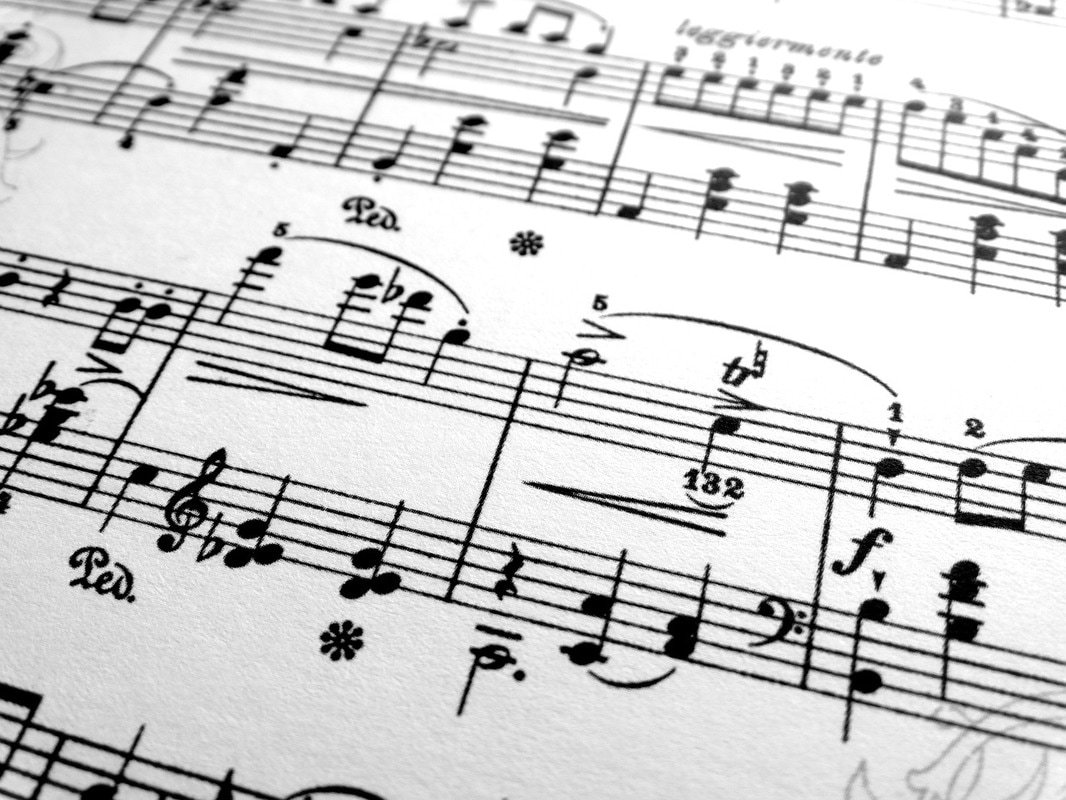
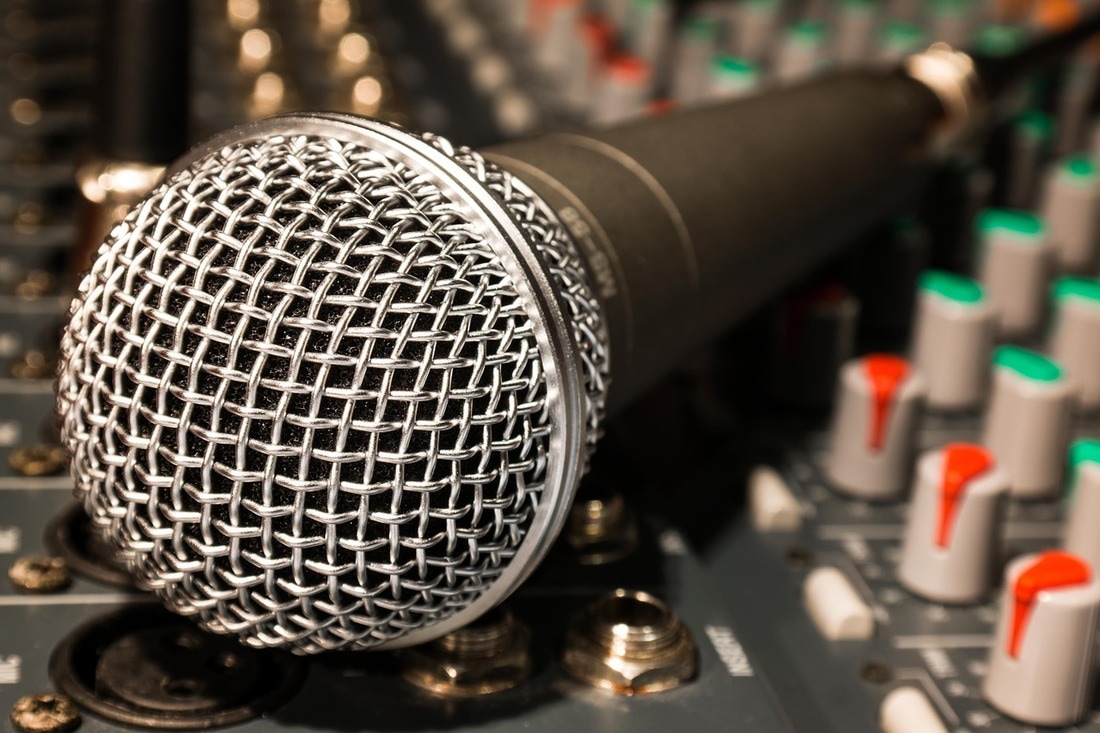
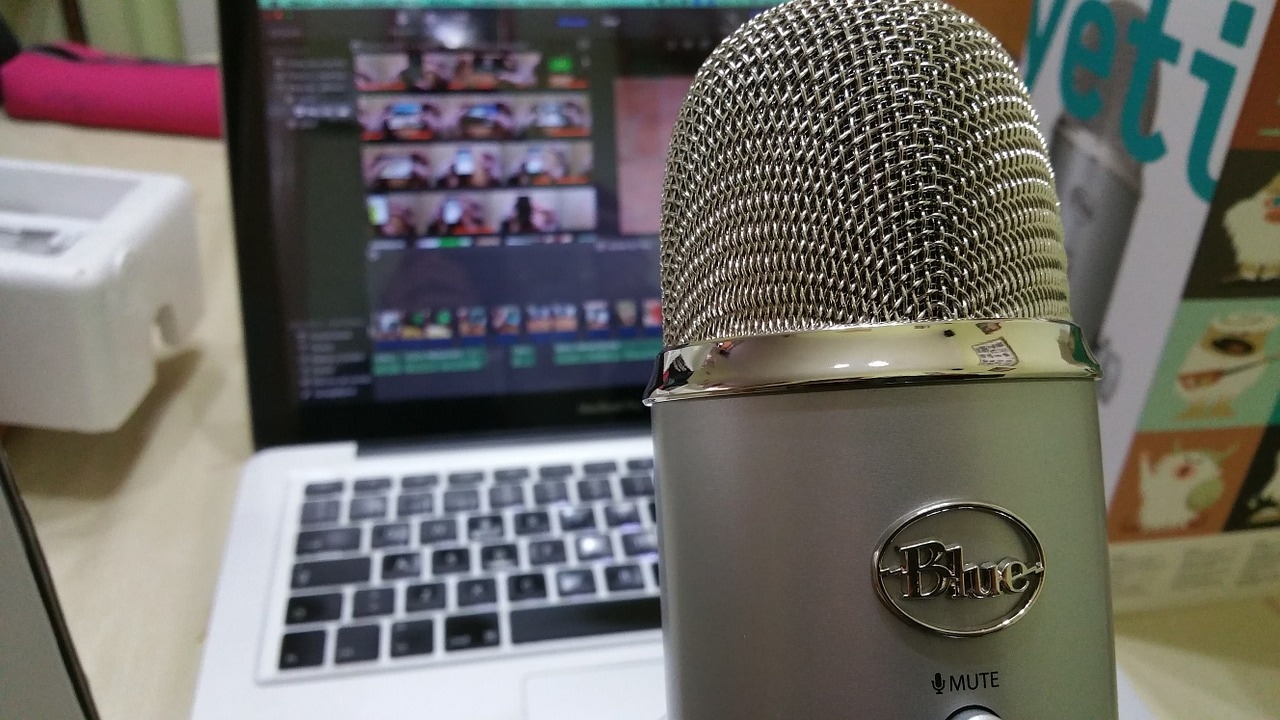
 RSS Feed
RSS Feed
